Table of Contents
Introduction
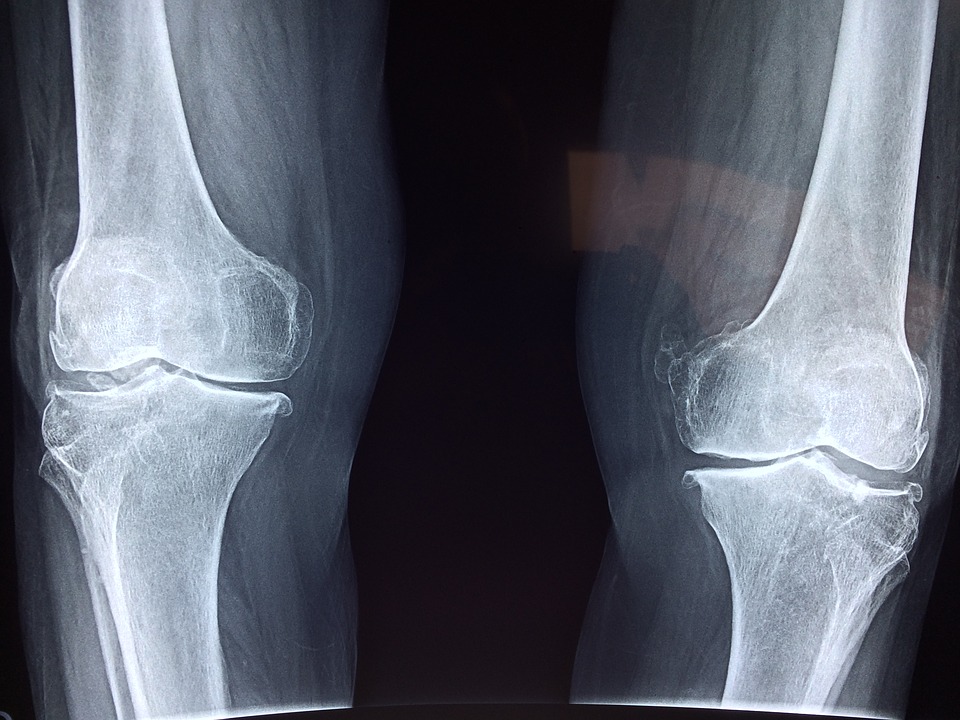
There is no known cure (yet) for arthritis. Much of the research and development surrounding this sometimes debilitating disease focus on the alleviation of symptoms associated with the disease.
The two most common forms of arthritis are osteoarthritis and rheumatoid arthritis. Osteoarthritis is what’s commonly associated with old age. Rheumatoid arthritis, on the other hand, is an auto-immune disease whereby your own body’s defenses attack your own tissues.
But both affect the same parts of the body, via the joints and its cartilages.
Arthritis is a disease that generally affects the joints. Its symptoms are characterized by pain, swelling, redness, stiffness, and sometimes immobility of the affected joints.
Most of these symptoms can be treated using pain medication. But, the use of dietary supplements can also be effective in counteracting some of these symptoms.
Supplements assist our bodies in supplying nutrient deficiencies, e.g. vitamin and mineral deficiencies that result in poor bone and joint health.
Also, supplements help improve joint health by providing more nutrients, e.g. omega-3 fatty acids and anti-oxidants. These help your body’s immune system to fight against inflammation.
Below are some of the best and most common supplements/nutrients for arthritis.
Glucosamine
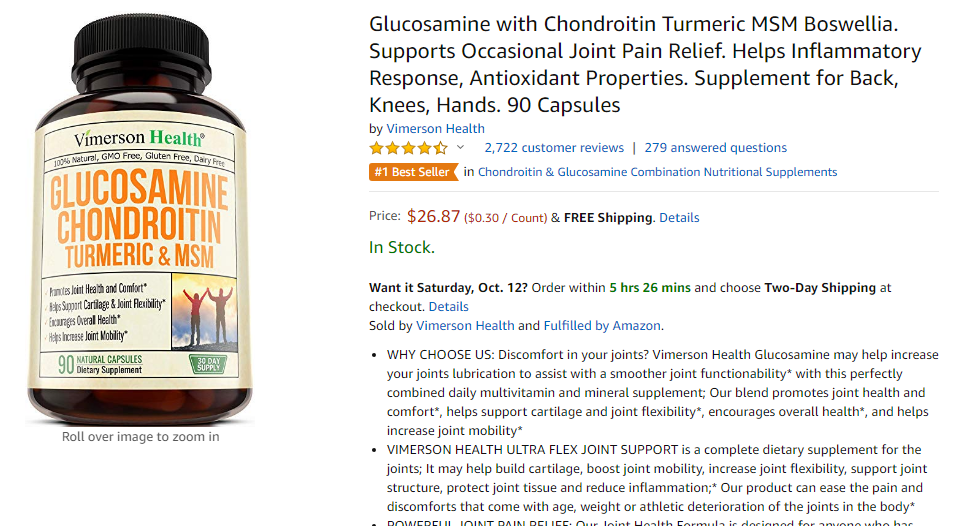
Glucosamine sulfate is the form of glucosamine that often finds its way in dietary pills. Glucosamine is a fluid that is naturally produced by our bodies and is often found around the joints.
It is largely responsible for building ligaments, cartilages, and tendons. Glucosamine is believed to supply the joints with additional fluids and cartilage.
Shellfish shells and shark cartilage are natural sources of glucosamine, but glucosamine sulfate can also be manufactured in pharmaceutical laboratories.
Bone marrow and animal bones (e.g. knee cap) are an excellent source of glucosamine. Shrimp and crab are also great sources. The shell of shellfish contains much glucosamine sulfate, but it can only be isolated in laboratories.
Chondroitin
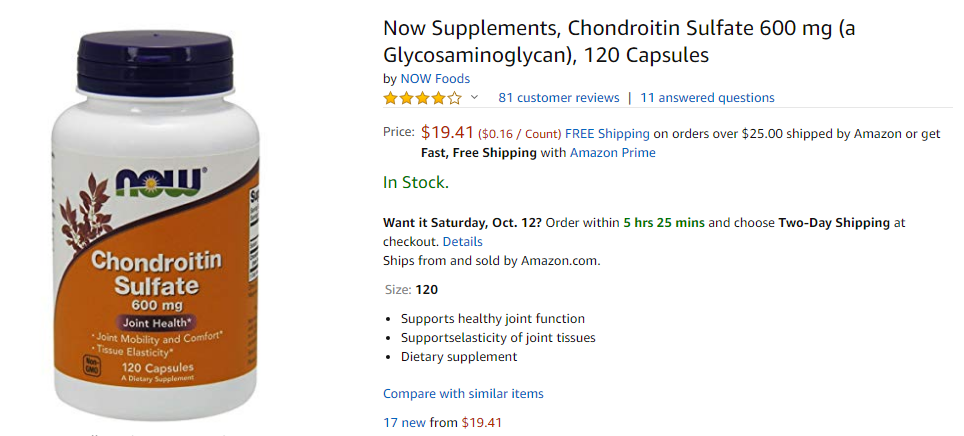
Chondroitin sulfate is also produced by our bodies and can be found in the cartilage surrounding the joints.
Chondroitin is often isolated from the cartilage of cows and sharks. It is believed that taking chondroitin orally, through injection, or applied topically on affected joints, slows down the degradation of cartilage.
Foods containing cartilaginous material, like cows’ trachea, pigs’ ears, eyes, and head, are rich in chondroitin. Also, chicken feet, fish head, and many types of fish like mackerel, sardine, eel, and kelp, are also rich in chondroitin.
Hyaluronic Acid
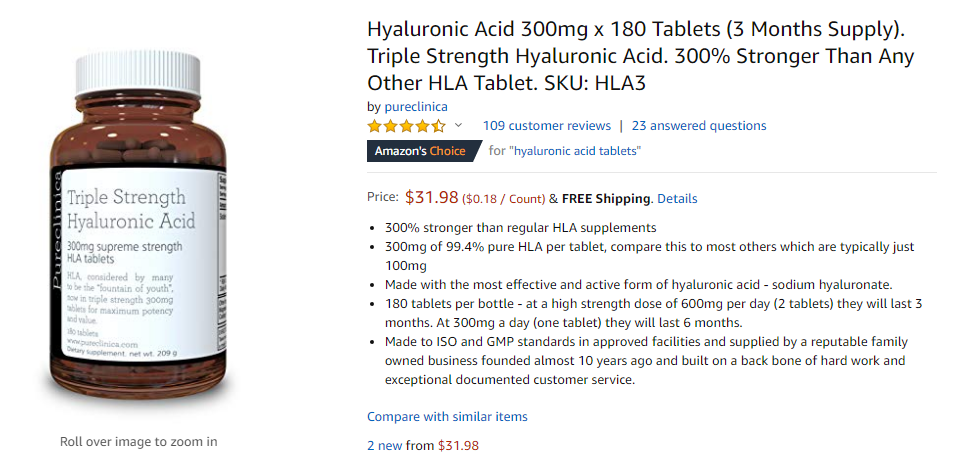
Hyaluronic acid is known to have anti-aging properties. But, it is most effective when used in synergy with glucosamine and chondroitin in slowing down the aging process.
Hyaluronic acid is behind the myth surrounding the umbilical cord. As strange as it sounds, stories have been told of victims that have fallen ill to an uncurable disease, and ended up using a baby’s umbilical cord to make soup. It’s said that when they drank the soup, it healed them of the incurable disease.
The simple explanation is that, the umbilical cord is rich in hyaluronic acid. Hyaluronic acid is often found in fish eyes, and also in the joints of animals.
Fish Oil
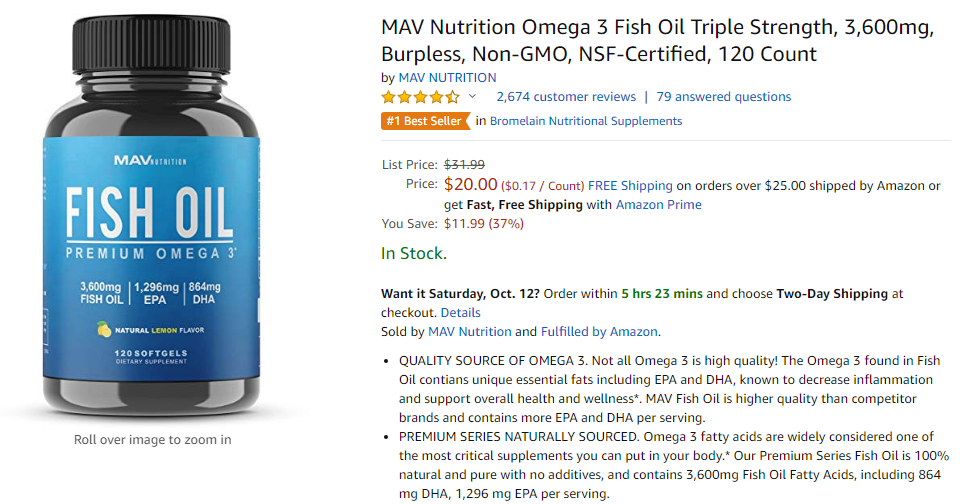
Fish oil is rich in omega-3 fatty acids. This fatty acid has anti-inflammatory properties that reduce the incidence of inflammation and acute flare-ups.
Fish oil has been known to reduce pain and lessen the number of pain centers (affected joints) in rheumatoid arthritis sufferers.
Also, fish oil has been reported to shorten the period of morning joint stiffness.
Good fish sources of high omega-3 fatty acids are mackerel, herring, salmon, sardines, and anchovies. Cod liver oil, caviar, and oysters are also solid choices.
Other natural sources of omega 3 fatty acids are walnuts, soy-derived products, hemp seeds, chia seeds, and flaxseeds.
Curcumin/Turmeric
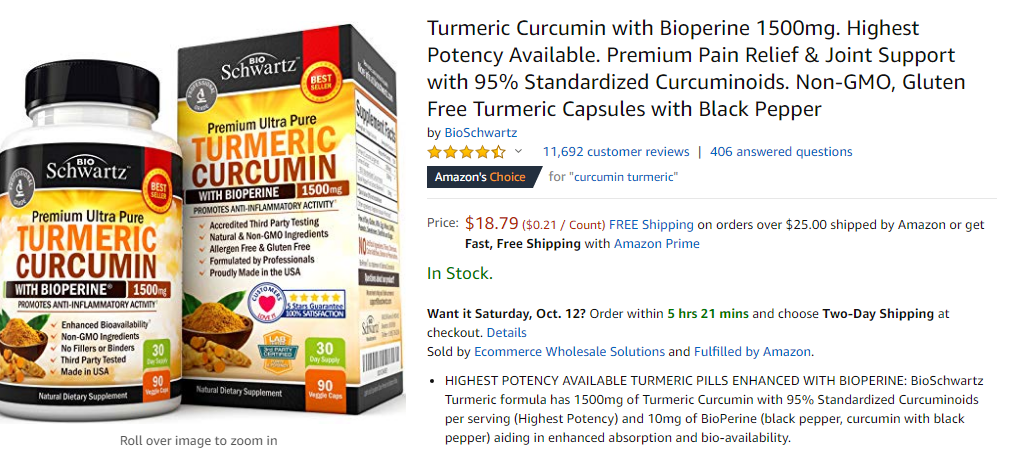
Curcumin is a yellow chemical that gives turmeric root its characteristic yellow color. Turmeric is a cousin of ginger root.
Turmeric is believed to have anti-inflammatory and anti-oxidant properties. Turmeric tea has been used for ages in Ayuverdic medicine as a remedy for a number of ailments, including indigestion, anxiety, and joint pains associated with arthritis.
The curcumin in turmeric is isolated and is taken in its pure form or included as an ingredient in complex dietary formulations.
Quercetin
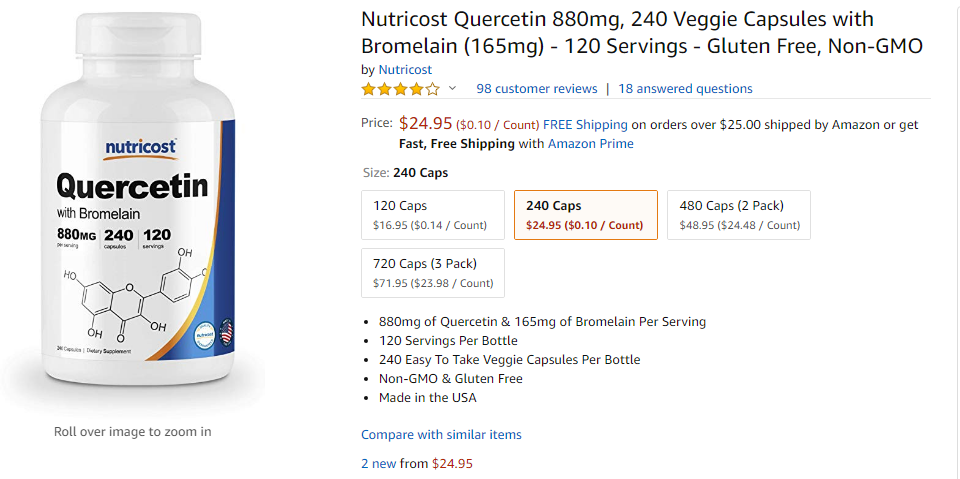
Quercetin is a pigment found in fruits, such as apples and berries, and medicinal plants like Ginkgo biloba and St.John’s wort.
Quercetin also finds its way in red wines, from the skin of grapes. It boosts your immune system and is known to fight against free radicals.
It has been used in traditional medicine to treat various ailments, including diabetes, peptic ulcers, chronic arthritis and gout.
Food sources for quercetin include dark green leafy vegetables and broccoli. You can also get quercetin by drinking black and green tea.
Other sources also include onions, apples, grapes, raspberry, fruit juices and wine.
Collagen
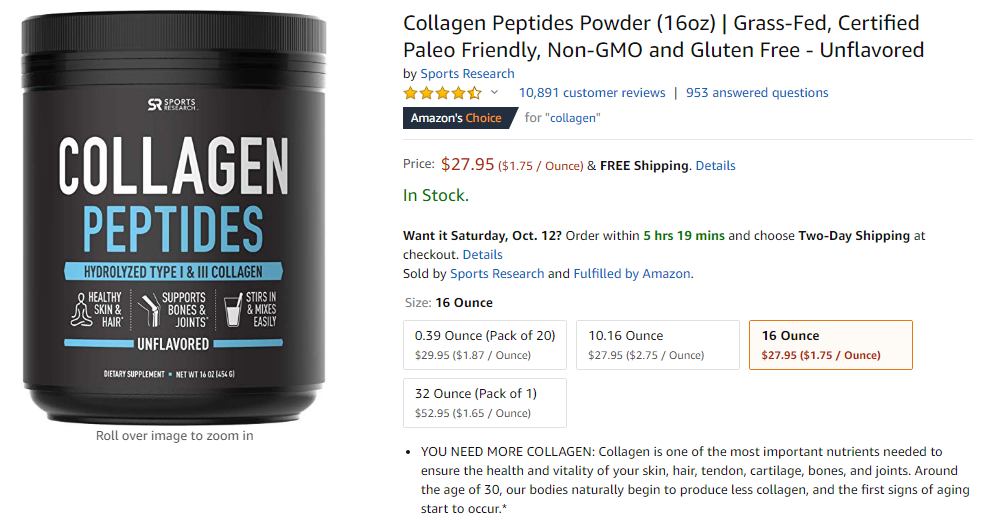
Collagen is a protein substance largely found in tissues surrounding your joints.
Around 25 – 30% of your body protein is made up of collagen. Collagen functions in various ways to support connecting tissues of your joints, muscles, and skin. It gives elasticity to your skin, muscles, and joints.
Collagen is produced in your body, but as your body grows old, the production of collagen decreases. This results in stiffness and pain in areas that lose the flexibility and support that collagen gives.
A major food source of collagen is bone broth, a soup that is made by simmering leg bones of cows and pigs (chicken also) for long hours. It is a very nutrient-dense broth and is rich in collagen.
Other food sources like green leafy vegetables, citrus fruits, and also oysters, contain vitamins and minerals that help your body produce collagen. Animal proteins are made up also of amino acids that your body can use in its production of collagen.
Selenium
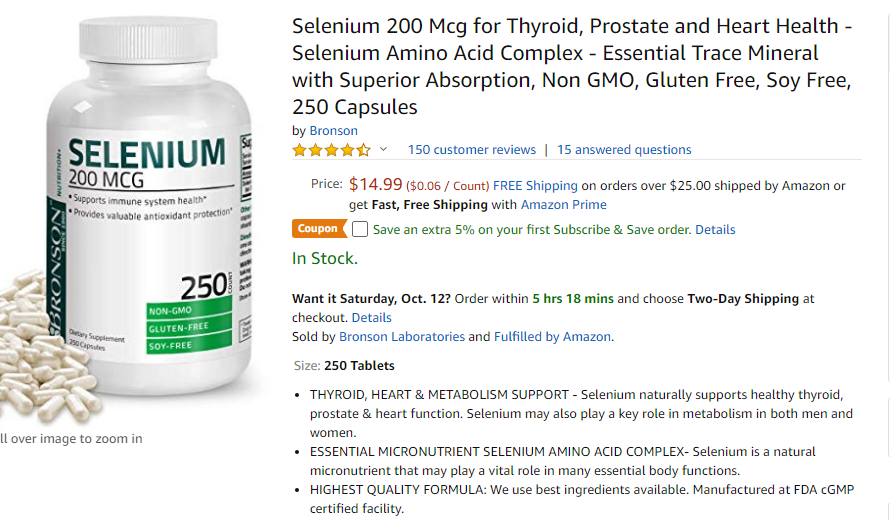
Because of its anti-oxidative properties, selenium is an effective mineral that helps prevent inflammation.
Selenium aids the body by reducing free radicals that are the main cause of cellular damage. It also aids the body in enhancing brain function and slowing down the aging process.
A main food source of selenium is the Brazil nut. Some say it is probably the best source of selenium.
Yellow fin tuna, other animal protein (e.g. beef, pork, chicken meat), and eggs, are also good sources of selenium. Other sources include legumes, soy, nuts, and mushroom.
Boswellia Extract
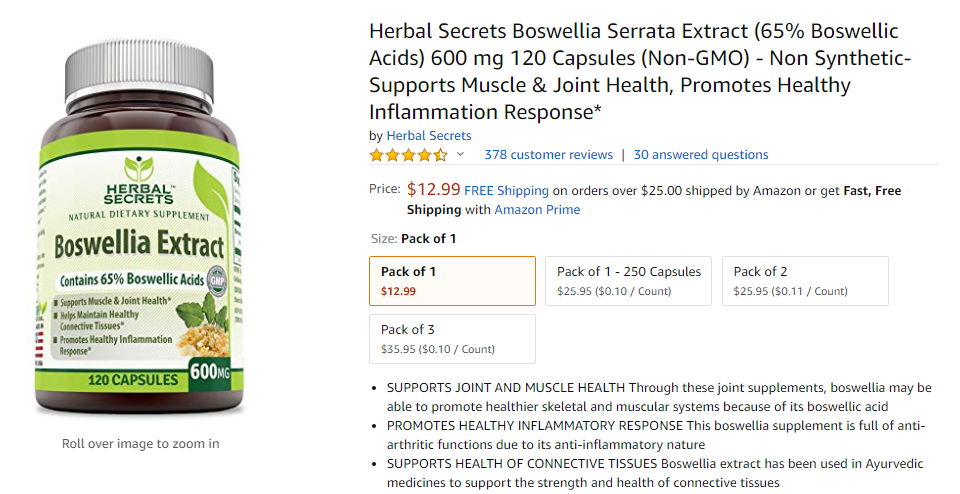
Boswellia (or Indian frankincense) extract is a powerful supplement for arthritis. Its main ingredient, boswellic acid, is know to reduce inflammation by preventing leukotrienes from forming.
Leukotrienes trigger inflammation. Boswellic acid prevents the break down of joint cartilage. Also, because of its anti-inflammatory properties, boswellia extract can be used as an effective pain-killer.
Cat’s Claw
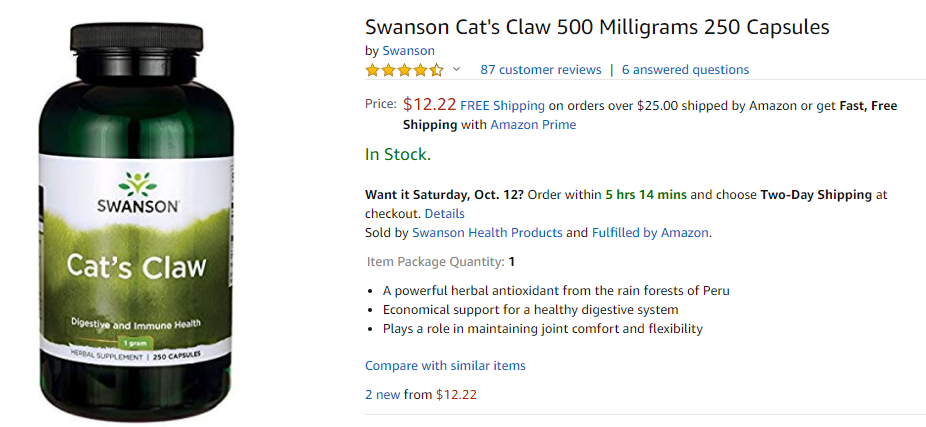
The root and bark of cat’s claw, a woody vine that originated from Central and South America, has been used in traditional medicine as a treatment for multiple ailments, which include chronic fatigue syndrome, indigestion, and various inflammations affecting the digestive tract.
Also, it has a proven positive effect in the reduction of chronic pain and inflammation associated with both osteoarthritis and rheumatoid arthritis.
Cat’s claw is believed to boost your body’s immune system and is usually taken in the form of a tea drink.
Specific Supplements
If you are a person on the go and would like the complete supplement package all-in-one, there are commercial dietary supplements available online and in health shops.
Among the most popular are: SEDDS® Super Joint, BIOSCHWARTZ® Maximum Strength, and NutriRise Glucosamine Chondroitin.
Most of these commercial preparations combine glucosamine and chondroitin in varying proportion with an addition of (again) a combination of the other supplements in varying concentrations.
These supplements, whether mixed in your daily food or in the form of pills, drinks, or lotions, help your body fight against arthritis.
They also improve your general health and wellness — they can help strengthen your bones and improve bone mass, protect your joints, and benefit your heart.
Conclusion: Ending Tips
One final thought: live healthy and eat healthy. Supplementation can certainly help, but it’s only one part of a long-term equation.
Exercise regularly. This does not necessarily mean to engage in high intensity sports. Exercising regularly simply means doing physical activity involving your normal strength, flexibility, agility, and coordination of your bodily movements.
This allows the joints of your body to be in constant motion for a continued period of time. It is true, what they say, “You lose what you don’t use!”
Eat healthy. Eat foods that are rich in anti-oxidants and anti-inflammatory properties.
Also, try to avoid foods that trigger inflammation, e.g. processed foods and trans fats. Focus on eating whole foods, organic foods, fruits and vegetables.
If you suffer from symptoms associated with arthritis, ask your doctor for recommendations. Your doctor will normally recommend arthritis medication, but remember, now that you know of some of the best supplements for arthtritis, you have options to figure out a solution that’s right for you.
